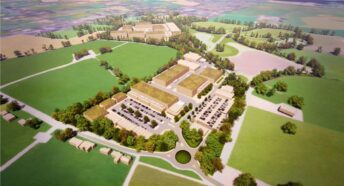How will new housebuilding targets affect Berkshire?
The Government’s new National Planning Policy Framework (NPPF), published last week, is “a recipe for disaster” and will inflict “an avalanche of new development” on Berkshire, according to the local branch of the Campaign to Protect Rural England (CPRE).
Under the NPPF’s ‘Standard Method’ for calculating new housebuilding targets, thousands of extra houses will need to be built every year throughout Berkshire, in addition to their current housing targets, many of them on green spaces and open countryside, including the Green Belt.
CPRE is warning that “huge swathes of Berkshire’s countryside” could end up being concreted over.
“This is an incredibly very short-sighted policy” says CPRE Berkshire Secretary Gloria Keene MBE. “It will do irreparable harm to our natural environment, our wildlife and biodiversity, and to local people’s quality of life. It also means losing farmland at a time when we should be protecting agricultural land for the sake of food security and sustainability.”
Gloria adds: “The scale of new development that the Government wants to impose on Berkshire’s districts will be utterly devastating for local communities. How can anyone be seriously proposing to build thousands of new homes every year in Berkshire when there is not the infrastructure or public services to support this rapid expansion of the local population?”
The new annual housing targets for the six Berkshire local authorities are:
Bracknell Forest 766
Reading 1,028
Slough 808
West Berkshire 1,070
Windsor & Maidenhead 1,449
Wokingham 1,336
These new targets are mandatory and will have to be followed by the local councils in all these areas.
Under the new NPPF, the Berkshire boroughs that are closer to London and within the Metropolitan Green Belt will have to ‘review’ their Green Belt countryside and redesignate some of it as ‘Grey Belt’ (or ‘lower performing Green Belt’) so that it can be built on.
CPRE points out that when London’s Green Belt was created 70 years ago, to prevent urban sprawl, it was intended to be permanent. The idea behind it was to steer new development towards major towns and cities rather than allowing this development to spill out into the countryside.
In addition to the new threat to eastern Berkshire, villages in the more rural west of the Royal County, including land close to the North Wessex Downs National Landscape, also face being “over-developed and urbanised” according to CPRE.
Gloria Keene explains: “The whole policy is illogical. The Government is giving a free pass to London and the big cities, which, bizarrely, have been given lower development targets under this new NPPF, while at the same time demanding that counties like Berkshire take far more than their proper share of new housing. That is neither fair nor sustainable.”
CPRE Berkshire will be holding seminars in early 2025 for councillors and community representatives across the Royal County to help communities meet the challenge from the Government’s planning reforms. For more information on CPRE’s work please visit www.cpreberkshire.org.uk
-ENDS








